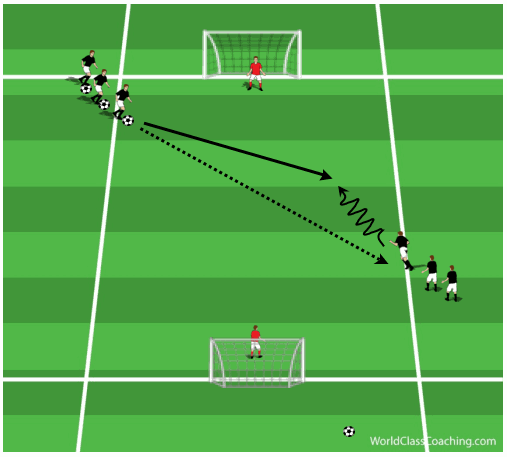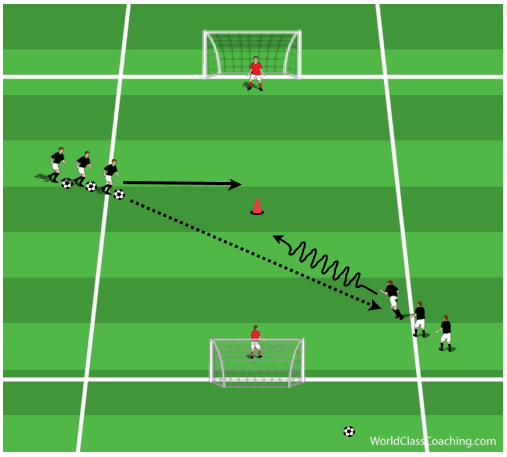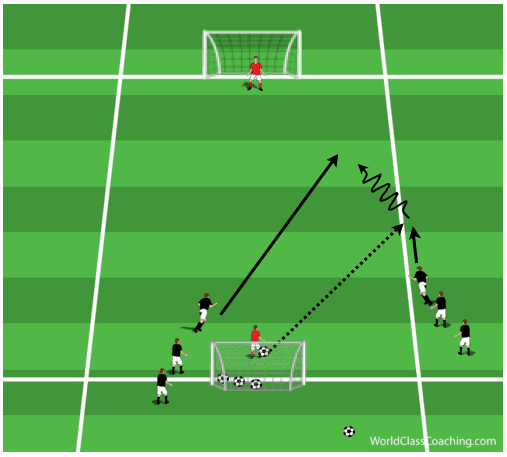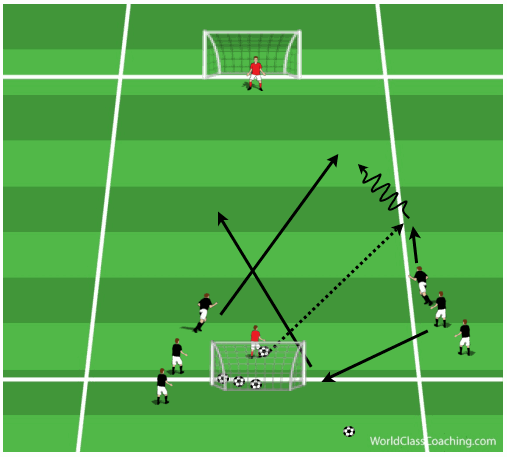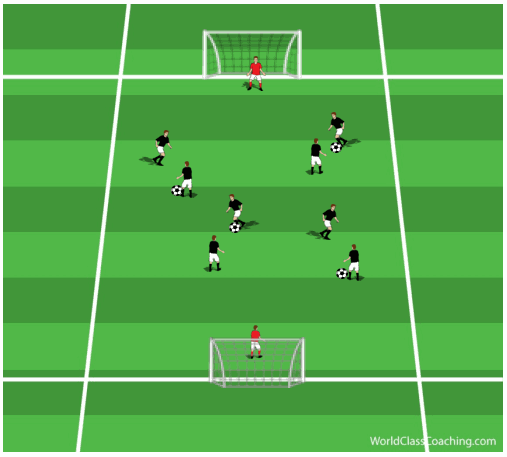When many coaches create 1 v 1 environments for their team it's limited to an attacker facing a defender who then tries to beat him to score. This certainly occurs during games but there are so many more scenarios that players need to learn how to deal with. This week I want to present ways to make the same old 1 v 1 exercise realistic to more scenerios that occur in a match.
A simple way to adjust the traditional 1 v 1 exercise is to change the position of the players and angle of the passes.
The angle gives the defender the opportunity to force the attacker wide and requires the attacker to use different moves or fakes to make his way into the middle to finish from a better angle.
When the attacker receives the ball he has to dribble to the center before trying to beat the defender to the left or right. By moving the defenders to the outside they will make their pressuring run from a flatter angle giving the attacker the opportunity fake the defender and have them over-pursue or stop short and allow the attacker to beat them on the right. This is similar to a wide player running inside against a central defensive player.
By moving the defender behind the attacker and playing the ball wide you recreate the scenario of a recovering defender moving to intercept an attacker that has been played in behind the defense.
As a progression you can have the next attacker in line sprint to touch the post and then run to support the player on the ball creating a 2 v 1.
When you play 1 v 1 you often lose the 'noise' of other players being around as it occurs in the game. It's fine to start with 1 v 1's in isolation as we have done with the other exercises but a good progression is to put multiple pairs on the same field playing at the same time. The attacker is primarily trying to beat the defender they are facing but they also have to find space between and around the other games that are occurring at the same time.
This organized chaos is a great environment train skillful, creative players. They have to deal with defenders coming at them from different angles as well as recognizing where there is space and where there is pressure.
[wpsharely id="6889"][/wpsharely]There are many other ways to present 1 v 1 situations but these are the ones that have worked best for me over the years. Please share your ideas in the comments section below.
Have a great day!
Tom

